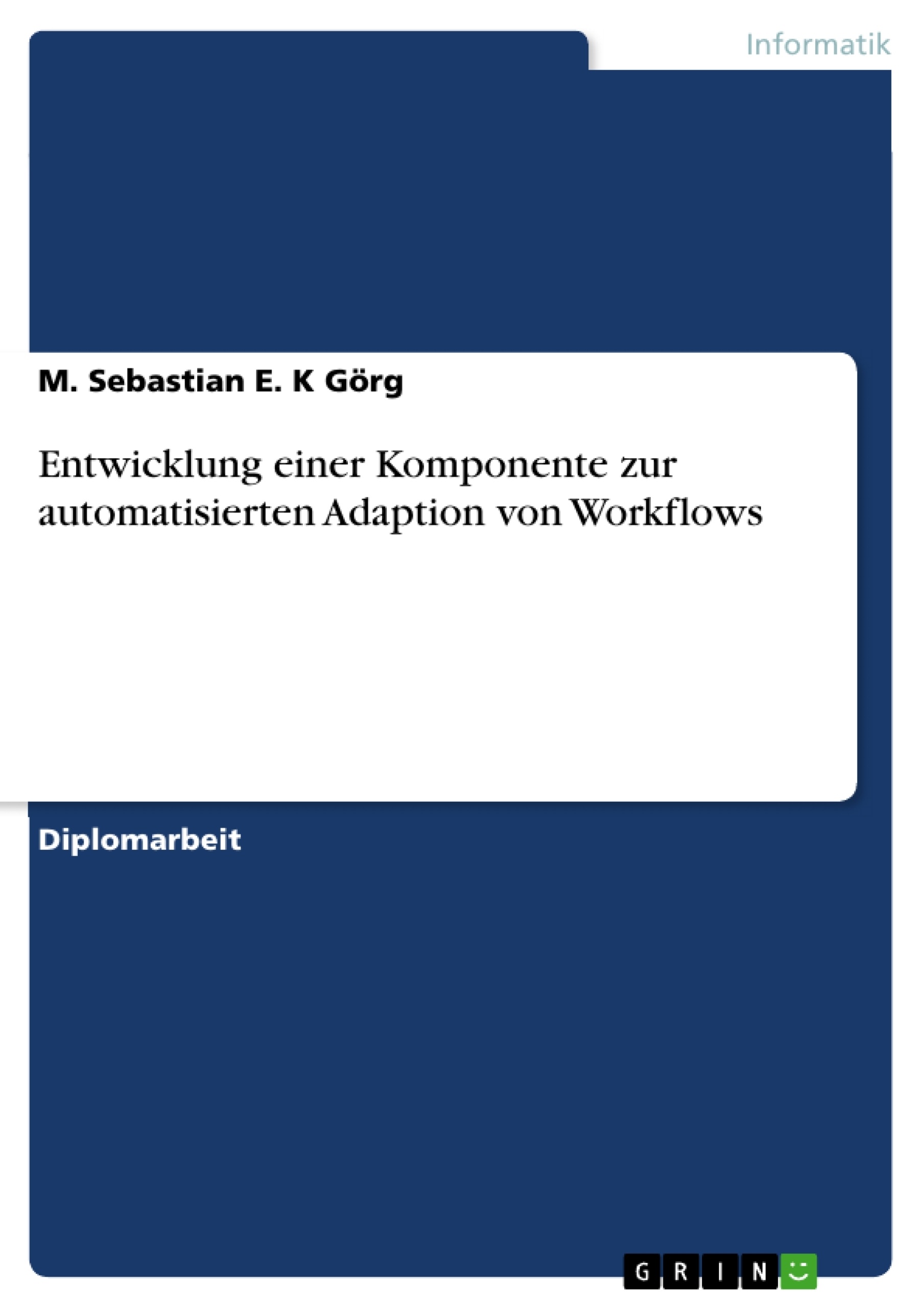Die Bedeutung der Prozessorganisation von Unternehmen wird in den kommenden Jahren nicht nur erhalten bleiben, sondern größer werden. Denn die Gründe, die zu einer intensiveren Auseinandersetzung mit den Prozessen geführt haben, werden nicht wegfallen, sondern sich eher noch verstärken [Wi07]. Diese Arbeit beschäftigt sich mit dem Problem, dass solche etablierten und standardisierten Prozesse fehlerhaft sein können oder geändert werden müssen, weil sich Umweltbedingungen geändert haben. Unerwartete Fehler können immer in Prozessen auftreten, unabhängig davon, ob es ein selbst erstellter oder übernommener Prozess ist. Der hier vorgestellte Forschungsansatz unterstützt den Prozessmodellierer, indem Prozesse automatisch von einem System sowohl zur Laufzeit als auch während der Modellierung geändert werden können. Dazu wird eine Methode aus einem Teilgebiet der künstlichen Intelligenz verwendet, die später genauer erklärt wird.
Inhaltsverzeichnis
- Kapitel 1 - Einleitung
- 1.1 Motivation
- 1.2 Grundbegriffe
- 1.2.1 Business-Prozess / Geschäftsprozess
- 1.2.2 Workflows
- 1.2.3 Workflow Management System (WfMS)
- 1.2.4 Abarbeitung und Steuerung von Workflows
- 1.2.5 Korrektheit
- 1.2.6 Erfahrungsmanagement
- 1.3 Technologische Grundlagen
- 1.3.1 Agilität in Workflows
- 1.3.2 Fallbasiertes Schließen
- 1.4 Ziel dieser Arbeit
- 1.5 Aufbau dieser Arbeit
- Kapitel 2 - Ähnliche Forschungsansätze
- 2.1 AdaptFlow
- 2.2 CODAW
- 2.3 CBRFlow
- 2.4 Phala
- 2.5 Bewertung der Systeme
- Kapitel 3 - Die CAKE Systeme
- 3.1 CAKE I
- 3.1.1 Architektur
- 3.1.2 Datenmodell
- 3.1.3 Ähnlichkeitsmodell
- 3.2 CAKE II
- 3.2.1 Architektur
- 3.2.2 Die CAKE Modellierungssprache
- 3.2.3 Konsistenz von Workflows
- 3.2.4 Das CAKE Statusmodell
- 3.2.5 Abarbeitung von Workflows
- 3.2.6 Anhalten von Workflows
- 3.3 CAKE III
- 3.3.1 Integration der CAKE Systeme
- Kapitel 4 - Konzeptentwicklung
- 4.1 Anforderungsanalyse
- 4.1.1 Szenarien
- 4.1.2 Anforderungen an den Adaptionsprozess von Workflows
- 4.1.3 Anforderungen an die Repräsentation von Fällen
- 4.2 Fallrepräsentation
- 4.2.1 Das Retrievalformat für Workflows
- 4.2.2 Die ADD- und DELETE-Listen
- 4.3 Der Adaptionsprozess
- 4.3.1 Der Adaptionszyklus
- 4.3.2 Setzen von Breakpoints
- 4.3.3 Das Retrieval von Adaptation Cases
- 4.4 Das Ankerprinzip
- 4.4.1 Das Lokalisierungsproblem
- 4.4.2 Adaptionsalgorithmen
- 4.4.3 Beispiel einer Workflow Adaption
- 4.5 Evaluation der Adaptionsalgorithmen
- 4.6 Beurteilung und Zusammenfassung
- Kapitel 5 - Umsetzung des Konzeptes
- 5.1 Voruntersuchungen
- 5.1.1 Performanztest von CAKE I
- 5.1.2 Untersuchung von Kochprozessen
- 5.2 Erweiterung von CAKE I
- 5.2.1 Implementierung der Fallrepräsentation
- 5.2.2 Implementierung des Retrievalformats für Workflows
- 5.2.3 Implementierung der ADD- und DELETE-Listen
- 5.3 Der Adaptation Manager
- 5.4 Die Interaktion der CAKE Systeme
- 5.5 Implementierung des CAM Algorithmus
- 5.6 Zusammenfassung und Beurteilung
Zielsetzung und Themenschwerpunkte
Diese Diplomarbeit befasst sich mit der Entwicklung einer Komponente zur automatisierten Adaption von Workflows. Das Ziel ist es, ein System zu schaffen, das Workflows dynamisch an veränderte Anforderungen anpassen kann, ohne dass manuelle Eingriffe notwendig sind.
- Automatisierung der Workflow-Adaption
- Fallbasiertes Schließen für Workflow-Anpassungen
- Entwicklung eines Adaptionsmanagementsystems
- Integration von CAKE-Systemen für Workflow-Modellierung und -Steuerung
- Bewertung und Analyse der entwickelten Adaptionsalgorithmen
Zusammenfassung der Kapitel
Kapitel 1 führt in die Thematik der Workflow-Adaption ein und beleuchtet die Motivation, Grundbegriffe und technologischen Grundlagen. Kapitel 2 präsentiert ähnliche Forschungsansätze und bewertet deren Stärken und Schwächen. Kapitel 3 beschreibt die CAKE-Systeme, die als Grundlage für die Entwicklung der Adaptionskomponente dienen. Kapitel 4 stellt das entwickelte Konzept der automatisierten Workflow-Adaption vor, einschließlich Anforderungsanalyse, Fallrepräsentation, Adaptionsalgorithmen und Evaluation. Kapitel 5 widmet sich der Implementierung des Konzeptes und präsentiert die Ergebnisse der durchgeführten Tests und Analysen.
Schlüsselwörter
Workflow-Adaption, Fallbasiertes Schließen, Workflow Management System, CAKE-Systeme, Adaptionsalgorithmen, Workflow-Modellierung, Automatisierung, Erfahrungsmanagement.
- Quote paper
- Dipl.-Wirt. Inform. M. Sebastian E. K Görg (Author), 2010, Entwicklung einer Komponente zur automatisierten Adaption von Workflows, Munich, GRIN Verlag, https://www.grin.com/document/170401



